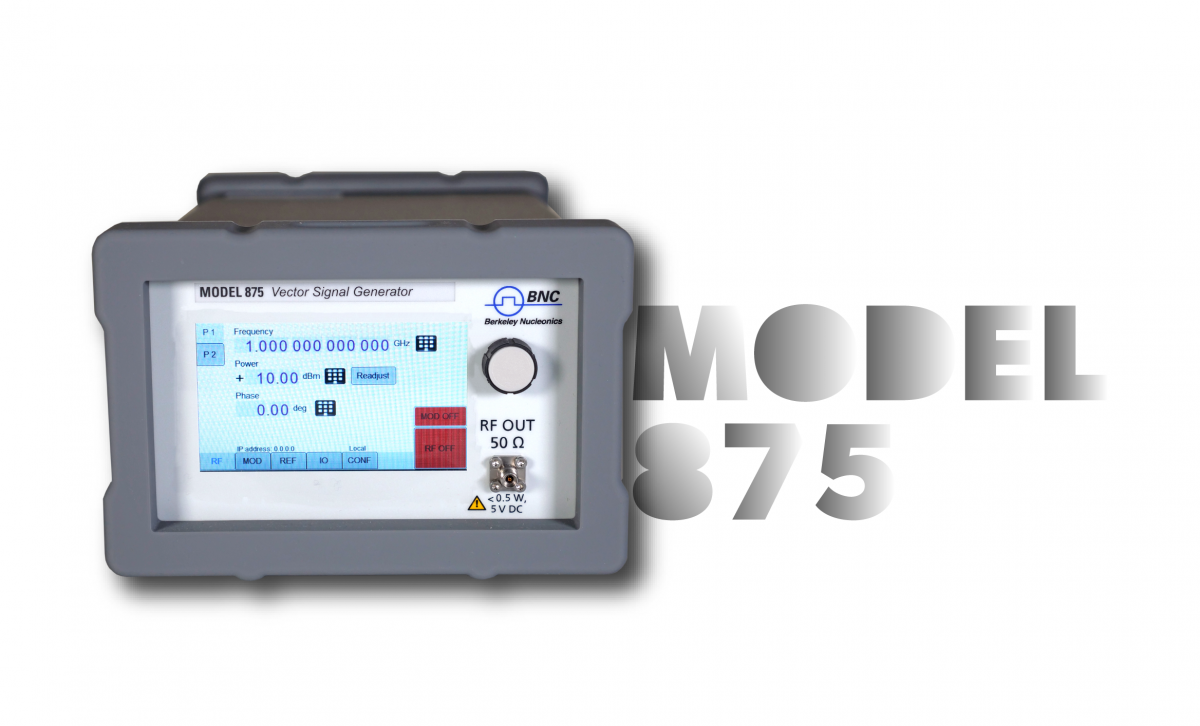August 14, 2023 - Exploring the Benefits of a Multichannel Vector Signal Generator | Model 875
In the ever-evolving landscape of technology, precision and adaptability are key drivers in the development of cutting-edge communication and radar systems. One such advancement that has significantly enhanced the capabilities of research and development engineers is the multichannel vector signal generator. In this article, we delve into the remarkable features and advantages of Berkeley Nucleonics' Model 875, an ultra-fast-switching vector-modulated signal source that is revolutionizing the realm of signal generation and simulation.

Unveiling the Model 875: A Multifaceted Marvel
The Model 875, crafted by Berkeley Nucleonics, stands as a pinnacle of innovation, boasting a comprehensive array of features that cater to a spectrum of applications. This ultra-fast-switching vector-modulated signal source covers an impressive continuous frequency range spanning from 10 MHz to 40 GHz, setting the stage for a diverse range of uses.
Unprecedented Speed and Precision
The Model 875's standout feature is its remarkable switching speed, reaching down to an impressive 200ns. This enables a slew of functionalities that were previously unattainable. Ultrafast continuous wave (CW) frequency sweeps, chirping, intra-pulse modulation, and pulse shaping are seamlessly integrated into its capabilities. The low phase noise further ensures the fidelity of the generated signals, making it an ideal choice for even the most intricate modulation scenarios.
Customized Modulation Waveforms
At the heart of the Model 875 lies a high-performance internal I/Q modulator. This modulator empowers users to craft and implement customized modulation waveforms, opening doors to unique signal designs tailored to specific needs. Moreover, the support for dedicated modulation schemes such as avionics modulations adds an extra layer of versatility.
Pulse Descriptor Word (PDW) Magic
The incorporation of Pulse Descriptor Words (PDWs) adds a novel dimension to the capabilities of the Model 875. PDWs, which contain crucial parameters like pulse duration, amplitude, frequency, and timing information, can be uploaded into the internal memory via Ethernet or USB communication ports. During playback, these PDWs are dynamically translated into modulation parameters, resulting in a stream of modulated radar signals. This real-time translation and playback of accurately timed PDW sequences prove invaluable, particularly in complex radar simulations.
Seamless Real-Time Playback
Engineers and researchers can rejoice in the convenience offered by the Model 875's Fast Control Port (FCP). Individual PDWs can be fed into the internal memory in real time, allowing for immediate playback. This dynamic feature facilitates rapid parameter changes, enabling a high degree of flexibility during the design and verification of complex radar simulations.
Applications and Versatility
- The applications of Berkeley Nucleonics' Model 875 are as diverse as they are impactful. Some notable use cases include:
- Arbitrary I/Q waveform generation
- Precise radar signal simulation (PDW / EW)
- Rigorous receiver testing
- Accurate avionic modulation emulation
- Pulse Descriptor Word (PDW) agility
- Multi-standard Mobile Radio Chip testing
- IEEE 802.11 a/b/g Test and R&D
Empowering Innovation: Unraveling the Features
Berkeley Nucleonics' Model 875 is not only defined by its remarkable capabilities but also by its impressive features that bolster its utility. Some of these features include:
- Excellent Phase Noise: Ensuring signal fidelity even in the most demanding scenarios.
- Fast Control Port: Facilitating real-time parameter changes and on-the-fly playback.
- Ultra-fast Switching: Redefining the speed at which signals can be generated and switched.
- Ultra-high I/Q Data Rates: Enabling the transmission of data at unprecedented rates.
- Deep Internal Memory: Empowering the storage and playback of intricate signal sequences.
- Wideband Linear Chirp: Perfect for applications requiring precise frequency sweeping.
- Diverse Modulation Schemes: Supporting ASK, FSK, MSK, PSK, GSM/EDGE, 3GPP FDD, HSDPA, GPS, and CDMA2000.

Within the realm of signal generation and simulation, the Berkeley Nucleonics Model 875 emerges as a transformative force, redefining the potential for research and development engineers. With its lightning-fast switching, adaptable modulation capabilities, and dynamic PDW integration, the Model 875 establishes a pathway to achieve precise and lifelike signal scenarios across a diverse range of applications. Sporting an extensive range of features and unparalleled performance, this model becomes a catalyst for innovation and accuracy across various domains. Positioned as a vanguard of progress in vector signal generation, the Model 875 charts new territories of advancement. To explore its capabilities further, visit the product page linked here.
